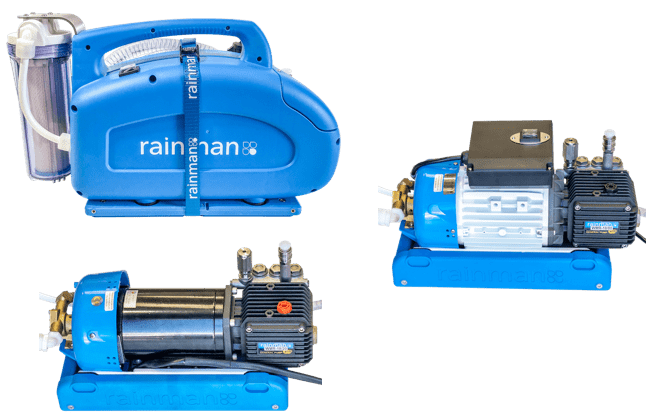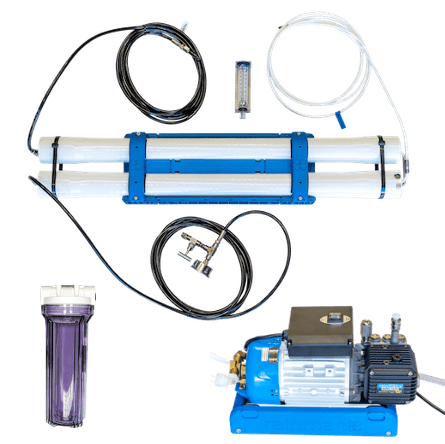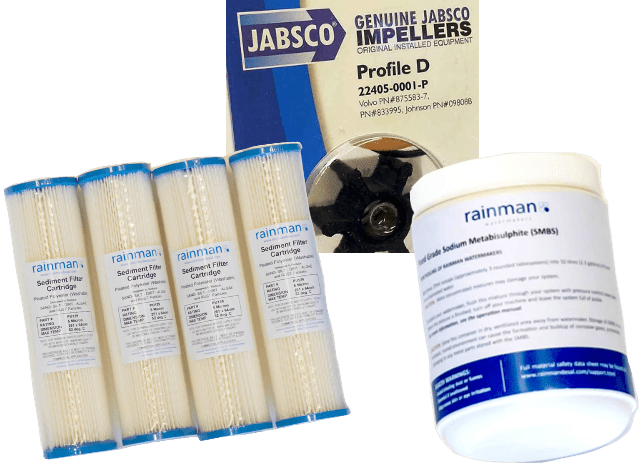'ONBOARD, A RAINMAN WATERMAKER PROVIDES A CLEAN, RELIABLE AND CONVENIENT SOURCE OF WATER REGARDLESS OF YOUR LOCATION'
RAINMAN WATER MAKER INSTALLATIONS
Rainman built their reputation on inventing and commercialising portable water makers. However, over the years many of our customers prefer to permanently or semi-permanently install their systems into their boat. There are many reasons for this:
- You don’t have to pull the system out on deck every time you use it.
- No hoses thrown over the side of your boat while system is in use.
- Less concern of hoses getting kicked out of place while in use.
- Easier to use while underway.
SYSTEM TYPES AVAILABLE
If you decide to install a Rainman watermaker, you can choose from any of our electric systems. We do not recommend you install our petrol (gasoline) powered watermaker. Options include:
AC POWERED
The primary design principle in the AC Rainman is that it must start and run using a Honda 2kVA portable generator. The ubiquity of this generator has helped make it the most popular system in our range. It can also run on a good quality 2kVA inverter. Higher capacity generators and inverters are commonly used as well.
12VDC POWERED
This system was designed with lower power and lower flow rates. Simplicity and low maintenance is retained by utilising a simple triplex plunger pump.


TWO COMPONENTS – ONE WATERMAKER
The system is made up of a pressure supply unit (PSU) and a reverse osmosis unit (RO). Both parts are required to make a complete watermaker. The PSU lifts the seawater, filters out the sediment and puts the system under high pressure, while the RO unit extracts fresh water from the stream of pressurised seawater. Most of the water goes out to waste as brine output, while about 20% of the volume is extracted as fresh potable water for your tanks. Different RO options exist for you to select with your AC Rainman system, each to achieve their own specific objective.
CASE OR NAKED
The system can be purchased either as the traditional blue case version or in the Naked configuration. Both can be easily installed in your boat. The pricing, performance and power consumption are identical between the two options, so your specific requirements control which is best suited for your application. The main differences between the two systems are:
- Naked comes without the blue cases, but includes most of the valves and plumbing components for your installation.
- The valve/gauge control on the reverse osmosis (RO) unit is at the end of a high pressure hose, so the membranes can be installed “out of sight and out of mind”.
TYPES OF INSTALLATIONS
Both the case and naked systems can be installed and plumbed in various configurations. The core components of the installation are:
- Dedicated or shared through hull for intake of seawater.
- Ability to draw water out of a bucket for flushing or pickling the watermaker. Using our autoflush option means you will rarely, if ever, need the pickling bucket.
- Control product water flow for testing or filling your tank.
- Brine waste water goes overboard.
EASY MOUNTING SYSTEMS
Often one of the challenges with a watermaker is the physical installation of the system. Rainman has developed a mounting system made of fibreglass reinforced nylon to make this process as easy as possible. Simply screw down the seats with self-tapper screws and the Rainman systems snap into place.
MAINTENANCE REQUIREMENTS
While there is limited maintenance on your Rainman watermaker, there are a few things that should be looked after to ensure a long life of your system.
WHEN STORING THE SYSTEM
- Fresh water flush and pickle the system when storing it for more than a couple days. This may sound complex, but it is an easy five minute process with no specialist knowledge required. Alternatively, install the autoflush system to avoid the need for manually performing this task.
5-50+ hours of use:
- Change the non-proprietary prefilter after 5-50+ hours of us, depending on cleanliness of the source water.
1-2 years:
- Change non-proprietary impeller in the lift pump after a year or two, depending on use.
- Change the high pressure pump oil each 300 hours of use, using SAE-30 weight oil.
5-10 years:
- Change the non-proprietary sized reverse osmosis membranes after 5-10 years.
- If your system starts losing performance, the non-proprietary pump seals may eventually require replacing.

